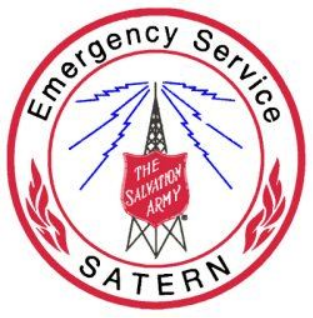We have had training exercises on the SATERN International Digital Net for some time now. This one is different. Instead of
having only the NCS sending a message and listeners reporting the result...we will expand that concept to multiple stations
sending the messages, multiple stations receiving the message, and then passing that message on to other stations, nets, and
using different modes, bands, and time of day.
The purpose of this is to use the skills gained during the net training and develop nationwide confidence that messages can be sent and received by multiple operators over various media in various modes - all error-free as the message reaches the final destination.
To make this happen, all stations - whether sending or receiving - must follow the same guidelines. The operating guidelines are given below. There must also be an audit trail maintained by the participating stations. So, it is not quite as simple as the Net training. Also, it is recommended that the sender schedule with a receiving station rather than just sending in the hope someone will hear and receive. That is where the value of local and regional nets become important and may be used in this exercise. That includes the net frequency for the SATERN International Digital Net of 14.065 USB. All stations are encouraged to monitor the net frequency from 10:30 CDT to NOON CDT each day, for stations that wish to relay the message in addition to other frequencies.
How would this work?
The message will be emailed by NCS to a willing operator on the West Coast. That operator will choose a time of day and band that allows reliable communication with another station. The message is sent with FLAMP (as learned on the Net) to another operator who knows how to use NBEMS. Only error-correcting modes like MFSK, THOR, or MT-63, that are supported by FLAMP, should be used. No WinMOR, PACTOR, VARA, or other digital modes are necessary or desired. Upon completion, the receiving stations will confirm 100% reception by clicking the REPORT button on the FLAMP receive tab.
Those stations confirming will then follow the same procedure as outlined here, selecting a band, mode, and time that available to the operator. The message will be repeated to the next station available, etc.
At the destination, the receiving and confirming station will view the message with the NBEMS FLMSG application, and send the HTML document to [email protected]. We will publish the results in the weeks following.
Making an audit trail
For this exercise to be of value, we must keep up with how it was routed. There must be additions to the message each time it is passed. The receiving station will edit the message (using FLMSG only) with the particulars given below and send it on with those additions.
The Message Format
The message format is particularly important. For the exercise to be of value, not only the text but also the format of the message should be intact. That means that the receiving operator cannot just simply cut and paste the text of the message. The message must remain intact (i.e. as sent) from the originator. The only change from sender to the receiver would be the edits made by the sender (with FLMSG) for the audit trail entry.
The Message
The message is in ICS-213 format and should appear similar to this as viewed with FLMSG in HTML using your browser:
Do not edit the HTML. You should edit the message text using the FLMSG message editor. The additions for audit trail are as
follows (example data with Date/Time in ISO format YYYY-MM-DD hh:mm UTC):
| Rvd From | |||
| Callsign | Date | Frequency(Mhz) | Mode |
| K7KY | 2020-07-04 12:00 UTC | 7.065 Mhz | MFSK64 |
| Sent TO | |||
| Callsign | Date | Frequency(Mhz) | Mode |
|---|---|---|---|
| K7IFG | 2020-07-04 13:33 UTC | 2m | THOR1000 |
Note: Callsigns used and time of day are for illustration purposes and not real data.
Suggested Schedule
| Band | Frequency(Mhz) | Time Of Day |
|---|---|---|
| 80m | 3.595.5 USB | 19:00-06:00 Local |
| 40m | 7.065 USB | 07:00-11:00 Local |
| 20m | 14.065 USB | 10:00-19:00 Local |
| 10m | 28.265 USB | 10:00-19:00 Local |
| 6m | 52.525 USB | 10:00-19:00 Local |
| 2m | Any Simplex SSB USB | 10:00-19:00 Local |
Please note several things:
DO NOT CUT AND PASTE THE RAW TEXT MESSAGE - USE FLMSG TO EDIT
DO NOT USE CW MODE
DO NOT USE NTS
DO NOT USE SSB PHONE
DO NOT DELIVER TO DESTINATION BY CELLPHONE OR LAND LINE
USE ONLY FLDIGI / NBEMS SOFTWARE
We hope you enjoy this exercise. Depending on this experience, we may hold other events of this nature in the future.
